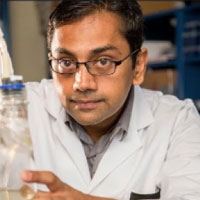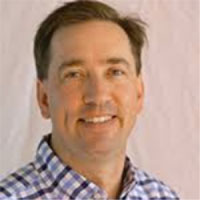Find schools
When you click on a sponsoring school or program advertised on our site, or fill out a form to request information from a sponsoring school, we may earn a commission. View our advertising disclosure for more details.
When you click on a sponsoring school or program advertised on our site, or fill out a form to request information from a sponsoring school, we may earn a commission. View our advertising disclosure for more details.

Kartik Chandran, PhD
Dr. Kartik Chandran, a professor in the Department of Earth and Environmental Engineering at Columbia University, is an American environmental engineer focusing on environmental molecular and microbiology, biotechnology, and engineering. He is a world-renowned expert on wastewater treatment and resource recovery. His research primarily focuses on uncovering the molecular microbial ecology and metabolic pathways of the microbial nitrogen cycle.
The practical applications of his work include developing sustainable approaches to sanitation, energy and resource-efficient treatment of nitrogen-containing wastewater streams, and innovative models for resource recovery. He was a co-author of the “Environmental Engineering for the 21st Century: Addressing the Grand Challenges” report published in 2019 by the National Academies.

Thomas Harmon, PhD
Dr. Thomas Harmon is a founding faculty member and civil and environmental engineering professor at the University of California, Merced. He also serves as director of the Sierra Nevada Research Institute, which oversees the work of over 60 professional researchers and faculty members. Before joining UC Merced, he taught at the University of California, Los Angeles. His research and teaching interests revolve around developing innovative technologies and methods to sustainably monitor, model, and manage environmental systems.
In addition, he regularly works on identifying viable solutions for complex socio-environmental problems. Dr. Harmon holds a bachelor’s of science in civil engineering from Johns Hopkins University and a master’s of science and PhD in environmental engineering from Stanford University. Working alongside other prominent environmental engineers and scientists, he is a co-author of the National Academies’ 2019 report “Environmental Engineering for the 21st Century: Addressing the Grand Challenges.”
Here are the five grand challenges presented in the “Environmental Engineering for the 21st Century Addressing Grand Challenges” report.
According to the report, “nearly 800 million people worldwide are undernourished; nutrition-related factors contribute to 45 percent of deaths in children under age five. In 2015, 844 million people had no access to safe drinking water, and 2.3 billion people did not have ready access to basic sanitation services. More than one billion people, or about one in seven globally, live without electricity.”
Dr. Chandran believes it starts with changing people’s habits to address the water part of this challenge in the United States. “Water use patterns have not changed much since this report was published. In New York City, for instance, we have access to pristine surface water that we can use with minimal treatment. It’s very good, so we can drink from the tap. But then that’s the same water we use to flush our toilets. That is a terrible use of drinking water,” he says.
Dr. Chandran continues, “On average, we use 100 gallons per capita per day, of which we drink one to two gallons. That’s the only drinking water we need. We don’t need drinking water to process heating and cooling or for irrigation where add nitrogen and phosphorus. Those things really need to stop.”
There has been some positive movement in some areas of the country, particularly regarding water access: “The Sustainable Groundwater Management Act in California has helped move us from a place where if you own the land and sink a well, it was your water. You didn’t have to tell anybody how much you were taking. Now we all need to know how much is coming out, and we all need to know that it’s sustainable. That’s a big move,” says Dr. Harmon.
Climate change is altering the world we live in. “In the United States, each degree of warming (Celsius) is projected to result in a 3 to 10 percent increase in the amount of rainfall during the heaviest rain events, a 5 to 15 percent reduction in the yields of crops as currently grown, and a 200 to 400 percent increase in the area burned by wildfire in western states,” states the report. This challenge focuses on how to limit climate change as well as help communities adjust to the effects.
“We have spent the last 20 years getting the public on board that the climate is changing. The wild weather whiplash in California and other places from drought to flood, and from crazy hot summers to very cold winters helped people realize it’s here to stay,” says Dr. Harmon. “However, climate change is like an ocean liner, and it’s not going to come to a stop just because we acknowledge that it exists. It’s going to take a long time to stabilize the climate. In the meantime, the impacts will probably get worse for a while.”
When addressing climate change and how to mitigate its effects, equity needs to be at the center of the conversation. “How do we get cooling reliably to impacted communities? How do we not lose power so often in lower-income areas? We’ve had huge floods this spring in California, and understandably, the brunt of the resources have gone to protect towns and cities. The small disadvantaged communities got hammered because the infrastructure isn’t there for them,” says Dr. Harmon.
The world produces a lot of pollution and waste. According to the report, “This linear model of ‘take-make-dispose’ has been successful in providing affordable products to billions of people and advancing their standard of living. However, this production model generates over a billion tons of discarded products and by-products globally each year and uses large amounts of energy and resources that are never recaptured.”
But it’s not only products: “How many dangerous chemicals do we now have? We have some chemicals which are quite prominent in our consciousness because they have the potential for a lot of harm,” says Dr. Chandran. These include pharmaceuticals, refrigerants, flame-retardant materials, pesticides, and fertilizers.
While there are efforts to reduce these, environmental engineers must plan for a world where they aren’t utilized. “There are targets that we are aiming for to use less of these, but we’re already behind. It’s already late. We need to move away from this after the fact changes and be proactive,” says Dr. Chandran.
As our population continues to expand, environmental engineers must tackle how to keep cities healthy and clean. Per the report, “Cities offer significant educational, economic, and cultural opportunities as well as better access to communication and health care services. These opportunities draw migrants from the rural countryside where such opportunities are sparser.”
Some of the problems cities present became clear during Covid, as large urban centers were epicenters of the virus spreading.
During the pandemic, many cities saw people moving out to suburban and rural areas to lower their cost of living and also to be able to spend time outside. While some have bounced back, not all have. “The very definition of cities has completely changed since Covid,” says Dr. Chandran. “We have to look and see what these communities represent going forward. And for this challenge, we should expand it and include threats of pathogens including antimicrobial resistance after what we learned during Covid.”
The last of the challenges identified by the report centers on changing how people approach problems. “New strategies and technologies will only be effective in solving these grand challenges with widespread adoption, which may require regulatory changes at the governmental level and behavioral changes at the community and individual levels. For this to happen, decision-makers in the public and private sectors and a significant portion of the general public must believe that the environmental problems are serious enough to warrant change—and that proposed solutions are worth adopting,” according to the report.
“As a whole, environmental engineers have been doing better at informing decisions and supporting policy and decision-makers. It is catching on. Our field is very technical and is more about problem-solving and less about communicating the problem-solving process or the solutions,” says Dr. Harmon. “On top of that, agencies at all levels, federal, state, and local, have traditionally been siloed. We have recently realized that we’re all connected and can’t solve problems in a silo. I’m seeing more research and implementation projects requiring partnerships that weren’t traditionally there in the past.”
In addition to working together to come up with solutions, everyone needs to work together to understand the impacts of interventions. “We cannot just say let’s ensure everyone has access to clean water and then not pay attention to the climate impacts of producing clean water such as the energy impacts, affordability, and sanitation,” explains Dr. Chandran. “Managing waste is going to affect energy production, which can cause more pollution and increase greenhouse gasses. This challenge asks us to consider how it will all play out and ensure we make informed decisions and actions.”
By reading a select number of engineering blogs, university students can gain access to the thoughts of some of the best engineers in the world and get on the path to becoming one themselves.
The concepts of civil engineering are particularly well-suited for the game environment, emphasizing the proper distribution of resources, the management of supply chains, and how the built environment interacts with the lived environment.
Among all employment sectors, engineering and technology are stereotypically replete with introverts, people who derive more pleasure, satisfaction, and energy from being alone as opposed to being in groups. While that is the stereotype, some engineers are extroverts, receiving much of their energy and enjoyment from being in the company of others. Fortunately for this group of people, many engineering occupations aren’t as introverted as they’ve been assumed to be.
By participating in a high school engineering program, students can build a solid foundation in STEM, form professional networks, and gain a clearer sense of their academic and career paths.
Engineers might be the only group of people where you can give them a problem—and they can consider it a gift. The engineering mind thrives on hunting for elegant solutions to complex tasks. That doesn’t mean you should give an engineering student a homework assignment for the holidays, but it does mean you can have some fun with the gift you eventually select.